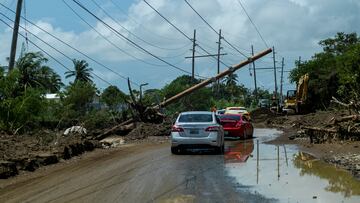Hurricane threat in Florida: What is a State of Emergency?
The state has enacted a state of emergency as a tropical depression approaches. What is it and whatcih measures are included?


The long-predicted flurry of hurricane activity in the US seems to be appraoching. 17 tropical storms, including six hurricanes, are expected throughout the whole of hurricane season 2022. With few happening before September there is a worry they will be coming in the short window of time before the season ends at the close of November. Hurricane Fiona has already battered Puerto Rico, destroying its fragile and privatised electrical grid leaving the entire island without power.
Florida is the next US territory to face the renewed hurricane activity as Tropical Storm Ian approaches. It could have the strength to cause serious damage once it makes landfall, encouraging the Floridian government to issue a state of emergency in 24 states that a set to be in the path of the behemoth
“Early next week, Ian is forecast to move near or over western Cuba as a strengthening hurricane and then approach the Florida peninsula at or near major hurricane strength, with the potential for significant impacts from storm surge, hurricane-force winds, and heavy rainfall,” the National Hurricane Center said.
Here are the 5 am EDT Saturday Key Messages for Tropical Storm #Ian. Get the latest storm information at https://t.co/tW4KeGdBFb pic.twitter.com/QaHIoxDjtT
— National Hurricane Center (@NHC_Atlantic) September 24, 2022
At present, the storm is nearby to Jamaica in the Caribbean and could make landfall by Sunday night.
“Today, I signed an Executive Order issuing a State of Emergency due to the threat of Tropical Depression 9,” said Governor Ron DeSantis. “This storm has the potential to strengthen into a major hurricane and we encourage all Floridians to make their preparations. We are coordinating with all state and local government partners to track potential impacts of this storm.”
This morning, Invest 98L strengthened into Tropical Depression Nine. While the eventual track of #TD9 is uncertain, Floridians should remain vigilant and ensure their households are prepared for a potential impact.
— Ron DeSantis (@GovRonDeSantis) September 23, 2022
Follow @FLSERT for continued updates and make a plan.
What is a State of Emergency?
A state of emergency is when a governor of a US state is given extra powers to make decisions and commit resources to combat a disaster without having to go through the normal processes of state congress. It enables them to make resources immediately available to rescue, evacuate, shelter, provide essential commodities, and all other necessary extraordinary measures.
Related stories
While this is usually enacted in the context of natural disasters there were a number of states that enacted states of emergecny during the covid-19 pandemic. This allowed the governors to prioritise assistence for those threatened by the disease.
If the disaster is too large for the state to handle then the governor can request federal help to deal with the problem.

